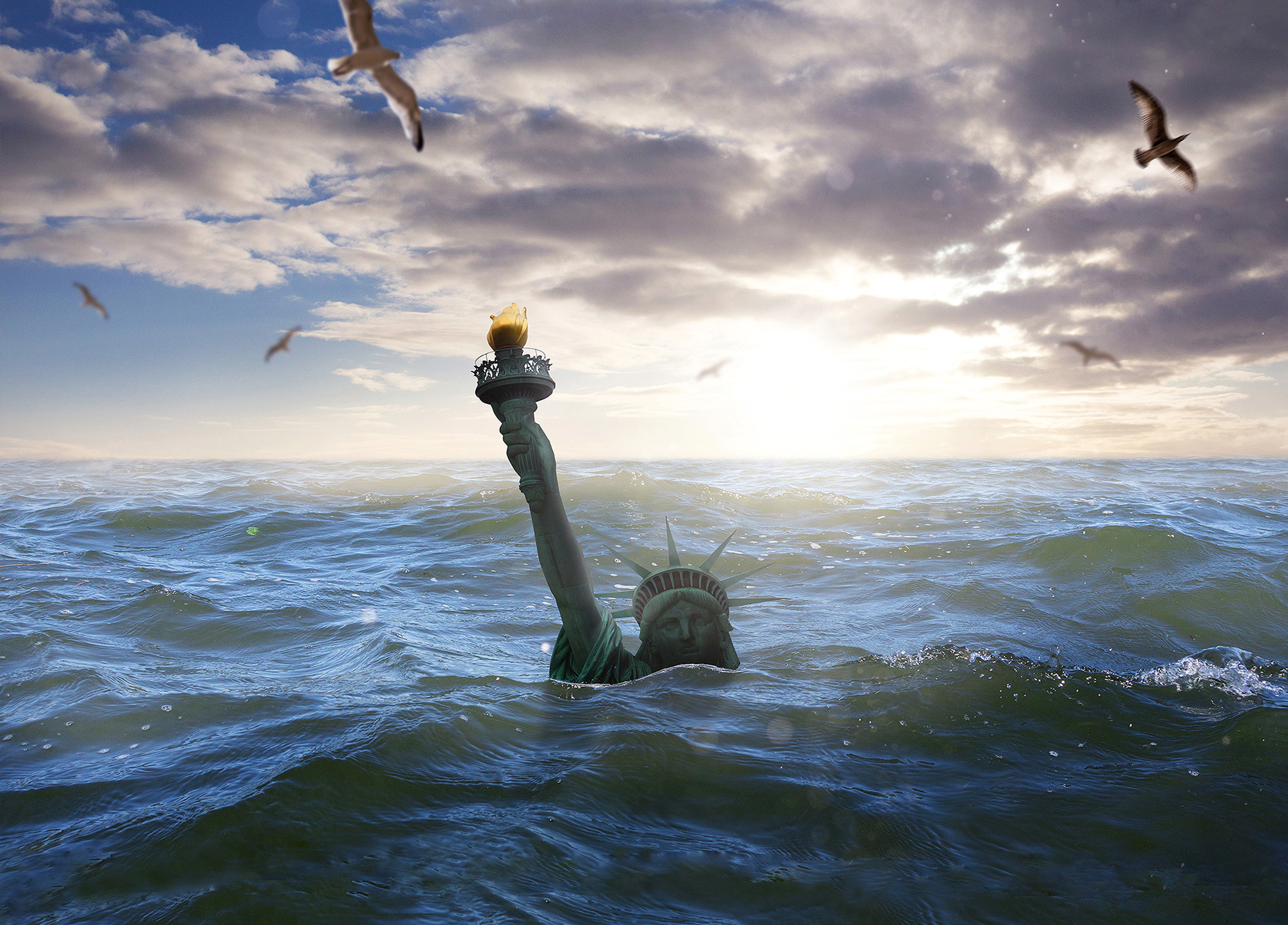The Increasing Threat Of Rising Sea Levels To Coastal Areas

Table of Contents
The Science Behind Rising Sea Levels
The increase in global sea levels is a complex phenomenon driven primarily by climate change. Two main factors contribute significantly: thermal expansion and the melting of glaciers and ice sheets.
Thermal Expansion
As ocean temperatures rise due to increased greenhouse gas emissions, the water expands, occupying a larger volume. This thermal expansion accounts for a substantial portion of observed sea level rise. The rate of expansion is accelerating, contributing significantly to the overall increase in sea level each year. The warmer the ocean becomes, the faster this expansion occurs.
Melting Glaciers and Ice Sheets
The melting of glaciers and ice sheets, particularly in Greenland and Antarctica, is another major contributor to rising sea levels. These massive ice bodies contain enormous amounts of frozen water. As global temperatures rise, this ice melts at an accelerating rate, adding vast quantities of freshwater to the oceans. Data from satellite observations consistently shows a dramatic increase in ice loss in recent years.
Sea Level Rise Projections
Scientific projections for future sea level rise vary depending on the extent of future greenhouse gas emissions. However, even under the most optimistic scenarios, significant sea level rise is inevitable. The IPCC projects considerable increases in sea level by the end of this century, with regional variations influencing the severity of impacts. Coastal regions will experience varying degrees of sea level rise, impacted by factors like land subsidence.
- Global vs. Regional Sea Level Rise: Global sea level rise is the average increase in sea level worldwide. However, regional variations can be significant due to factors like ocean currents, land subsidence, and gravitational effects.
- Land Subsidence: Land subsidence, the sinking of land, exacerbates the effects of sea level rise in many coastal areas, leading to even more rapid inundation.
- Reputable Scientific Sources: For detailed information and projections, refer to reports from the IPCC and data from NOAA (National Oceanic and Atmospheric Administration).
Impacts of Rising Sea Levels on Coastal Areas
The impacts of rising sea levels on coastal areas are multifaceted and far-reaching, affecting infrastructure, populations, and ecosystems.
Coastal Erosion and Flooding
Rising sea levels lead to increased frequency and severity of coastal flooding and erosion. High tides and storm surges now reach further inland, damaging homes, businesses, and critical infrastructure. Coastal erosion eats away at shorelines, leading to loss of land and habitat.
Saltwater Intrusion
Rising sea levels cause saltwater to intrude into freshwater aquifers, contaminating drinking water supplies and harming agriculture. This poses a severe threat to food security and public health in coastal communities. The impacts can be particularly devastating in regions with limited freshwater resources.
Loss of Coastal Habitats
Coastal ecosystems, such as wetlands, mangroves, and coral reefs, are highly vulnerable to rising sea levels. These habitats are critical for biodiversity and provide essential ecosystem services, including coastal protection. Inundation and saltwater intrusion destroy these valuable ecosystems.
- Examples of Severe Impacts: Many coastal cities, including Miami, Bangkok, and Dhaka, are already experiencing significant impacts from rising sea levels. The Maldives and other low-lying island nations are particularly vulnerable.
- Economic Consequences: The economic costs of rising sea levels are enormous, encompassing damage to property, disruption to tourism, and decreased agricultural productivity.
- Impact on Human Health: Increased flooding can lead to the spread of waterborne diseases and mental health issues related to displacement and loss.
Adaptation and Mitigation Strategies for Rising Sea Levels
Addressing the threat of rising sea levels requires a combination of adaptation and mitigation strategies.
Coastal Protection Measures
Engineering solutions like seawalls, breakwaters, and beach nourishment can offer some protection against coastal erosion and flooding. However, these measures are often expensive, have limitations, and can have negative environmental consequences. Their effectiveness also varies depending on the specific coastal environment.
Managed Retreat
Managed retreat involves strategically relocating communities and infrastructure away from vulnerable coastal areas. This approach acknowledges the inevitability of sea level rise in some locations and prioritizes protecting lives and investments. However, managed retreat is a complex and challenging process that involves ethical considerations and potential social disruption.
Reducing Greenhouse Gas Emissions
The most effective long-term solution is to mitigate climate change by significantly reducing greenhouse gas emissions. This requires global cooperation and the implementation of ambitious policies to transition to cleaner energy sources and reduce carbon emissions. International agreements, such as the Paris Agreement, play a crucial role in coordinating these efforts.
- Successful Adaptation Strategies: Examples include the development of early warning systems for coastal flooding, the restoration of coastal wetlands, and community-based adaptation planning.
- Community Engagement: Effective adaptation requires active participation from coastal communities in planning and implementation.
- Nature-Based Solutions: Restoring and protecting natural coastal defenses, such as mangroves and salt marshes, provides effective and sustainable protection against sea level rise.
Conclusion
The increasing threat of rising sea levels to coastal areas is a serious and urgent global challenge. The scientific evidence is overwhelming, demonstrating the significant impacts on coastal communities, ecosystems, and economies. Addressing the threat of rising sea levels requires a concerted global effort encompassing both adaptation and mitigation strategies. We must invest in coastal protection measures, explore managed retreat options, and drastically reduce greenhouse gas emissions to combat rising sea levels and protect vulnerable populations. Learn more about the issue and support organizations working to develop and implement effective solutions. By working together, we can mitigate the devastating consequences of rising sea levels and build more resilient coastal communities.

Featured Posts
-
 Part One
May 11, 2025
Part One
May 11, 2025 -
 Celtics Blowout Victory A Division Title Celebration
May 11, 2025
Celtics Blowout Victory A Division Title Celebration
May 11, 2025 -
 Rahal Letterman Lanigan Racings 2025 Indy Car Season Prospects
May 11, 2025
Rahal Letterman Lanigan Racings 2025 Indy Car Season Prospects
May 11, 2025 -
 7 Year Prison Term For Gpb Capital Founder David Gentile In Ponzi Case
May 11, 2025
7 Year Prison Term For Gpb Capital Founder David Gentile In Ponzi Case
May 11, 2025 -
 Adam Sandlers Unexpected Role In American Politics Uniting A Fractured Nation
May 11, 2025
Adam Sandlers Unexpected Role In American Politics Uniting A Fractured Nation
May 11, 2025
